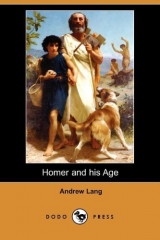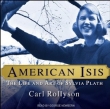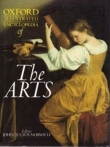
Текст книги "Homer and His Age"
Автор книги: Andrew Lang
Жанры:
История
,сообщить о нарушении
Текущая страница: 6 (всего у книги 18 страниц) [доступный отрывок для чтения: 7 страниц]
The Homeric poets describe the method of their own period. They assuredly do not adhere to an older epic tradition of shaft graves or tholosgraves, though these must have been described in lays of the period when such methods of disposal of the dead were in vogue. The altar above the shaft-graves in Mycenae proves the cult of ancestors in Mycenae; of this cult in the Iliadthere is no trace, or only a dim trace of survival in the slaughter of animals at the funeral. The Homeric way of thinking about the state of the dead, weak, shadowy things beyond the river Oceanus, did not permit them to be worshipped as potent beings. Only in a passage, possibly interpolated, of the Odyssey, do we hear that Castor and Polydeuces, brothers of Helen, and sons of Tyndareus, through the favour of Zeus have immortality, and receive divine honours. {Footnote: Odyssey, XI. 298-304.}
These facts are so familiar that we are apt to overlook the strangeness of them in the history of religious evolution. The cult of ancestral spirits begins in the lowest barbarism, just above the level of the Australian tribes, who, among the Dieri, show some traces of the practice, at least, of ghost feeding. {Footnote: Howitt, Native Tribes of South-Eastern Australia,p. 448. There are also traces of propitiation in Western Australia (MS. of Mrs. Bates).} Sometimes, as in many African tribes, ancestor worship is almost the whole of practical cult. Usually it accompanies polytheism, existing beside it on a lower plane. It was prevalent in the Mycenae of the shaft graves; in Attica it was uninterrupted; it is conspicuous in Greece from the ninth century onwards. But it is unknown to or ignored by the Homeric poets, though it can hardly have died out of folk custom. Consequently, the poems are of one age, an age of cremation and of burial in barrows, with no ghost worship. Apparently some revolution as regards burial occurred between the age of the graves of the Mycenaean acropolis and the age of Homer. That age, coming with its form of burning and its absence of the cult of the dead, between two epochs of inhumation, ancestor worship, and absence of cairns, is as certainly and definitely an age apart, a peculiar period, as any epoch can be.
Cremation, with cairn burial of the ashes, is, then, the only form of burial mentioned by Homer, and, as far as the poet tells us, the period was not one in which iron was used for swords and spears. At Assarlik (Asia Minor) and in Thera early graves, prove the use of cremation, but also, unlike Homer, of iron weapons. {Footnote: Paton, Journal of Hellenic Studies,viii. 64 ff. For other references, cf. Poulsen, Die Dipylongrдben, p. 2, Notes. Leipzig 1905.} In these graves the ashes are inurned. There are examples of the same usage in Salamis, without iron. In Crete, in graves of the period of geometrical ornament ("Dipylon"), burning is more common than inhumation. Cremation is attested in a tholosor beehive-shaped grave in Argos, where the vases were late Mycenaean. Below this stratum was an older shaft grave, as is usual in tholosinterments; it had been plundered? {Footnote: Poulsen, p.2.}
The cause of the marked change from Mycenaean inhumation to Homeric cremation is matter of conjecture. It has been suggested that burning was introduced during the migrations after the Dorian invasion. Men could carry the ashes of their friends to the place where they finally settled. {Footnote: Helbig, Homerische Epos,p.83} The question may, perhaps, be elucidated by excavation, especially in Asia Minor, on the sites of the earliest Greek colonies. At Colophon are many cairns unexplored by science. Mr. Ridgeway, as is well known, attributes the introduction of cremation to a conquering northern people, the Achaeans, his "Celts." It is certain that cremation and urn burial of the ashes prevailed in Britain during the Age of Bronze, and co-existed with inhumation in the great cemetery of Hallstatt, surviving into the Age of Iron. {Footnote: Cf. Guide to Antiquities of Early Iron Age,British Museum, 1905, by Mr. Reginald A. Smith, under direction of Mr. Charles H. Read, for a brief account of Hallstatt culture.} Others suppose a change in Achaean ideas about the soul; it was no longer believed to haunt the grave and grave goods and be capable of haunting the living, but to be wholly set free by burning, and to depart for ever to the House of Hades, powerless and incapable of hauntings.
It is never easy to decide as to whether a given mode of burial is the result of a definite opinion about the condition of the dead, or whether the explanation offered by those who practise the method is an afterthought. In Tasmania among the lowest savages, now extinct, were found monuments over cremated human remains, accompanied with "characters crudely marked, similar to those which the aborigines tattooed on their forearms." In one such grave was a spear, "for the dead man to fight with when he is asleep," as a native explained. Some Tasmanian tribes burned the dead and carried the ashes about in amulets; others buried in hollow trees; others simply inhumed. Some placed the dead in a hollow tree, and cremated the body after lapse of time. Some tied the dead up tightly (a common practice with inhumation), and then burned him. Some buried the dead in an erect 'posture. The common explanation of burning was that it prevented the dead from returning, thus it has always been usual to burn the bodies of vampires. Did a race so backward hit on an idea unknown to the Mycenaean Greeks? {Footnote: Ling Roth., The Tasmanians, pp. 128-134. Reports of Early Discoverers.} If the usual explanation be correct—burning prevents the return of the dead—how did the Homeric Greeks come to substitute burning for the worship and feeding of the dead, which had certainly prevailed? How did the ancient method return, overlapping and blent with the method of cremation, as in the early Dipylon interments? We can only say that the Homeric custom is definite and isolated, and that but slight variations occur in the methods of Homeric burial.
(1)In Iliad, VI, 4 I 6 ff, Andromache SAYSthat Achilles slew her father, "yet he despoiled him not, for his soul had shame of that; but he burnt him in his inlaid armour, and raised a barrow over him." We are not told that the armour was interred with the ashes of Eetion. This is a peculiar case. We always hear in the that the dead are burned, and the ashes of princes are placed in a vessel of gold within an artificial hillock; but we do not hear, except in this passage, that they are burned in their armour, or that it is burned, or that it is buried with the ashes of the dead. The invariable practice is for the victor, if he can, to despoil the body of the fallen foe; but Achilles for some reason spared that indignity in the case of Eetion. {Footnote: German examples of burning the amis of the cremated dead and then burying them are given by Mr. Ridgeway, Early Age of Greece,vol. i. pp. 498, 499.}
(2) ILIAD,VII. 85. Hector, in his challenge to a single combat, makes the conditions that the victor shall keep the arms and armour of the vanquished, but shall restore his body to his friends. The Trojans will burn him, if he falls; if the Achaean falls, the others will do something expressed by the word {Greek: tarchuchosi} probably a word surviving from an age of embalment. {Footnote: Helbig, Homerische Epos,pp. 55, 56.} It has come to mean, generally, to do the funeral rites. The hero is to have a barrow or artificial howe or hillock built over him, "beside wide Hellespont," a memorial of him, and of Hector's valour.
On the River Helmsdale, near Kildonan, on the left bank, there is such a hillock which has never, it is believed, been excavated. It preserves the memory of its occupant, an early Celtic saint; whether he was cremated or not it is impossible to say. But his memory is not lost, and the howe, cairn, or hillock, in Homer is desired by the heroes as a MEMORIAL.
On the terms proposed by Hector the arms of the dead could not be either burned or buried with him.
(3) Iliad, IX. 546. Phoenix says that the Calydonian boar "brought many to the mournful pyre." All were cremated.
(4) Iliad, XXII 50-55. Andromache in her dirge (the regretof the French mediaeval epics) says that Hector lies unburied by the ships and naked, but she will burn raiment of his, "delicate and fair, the work of women ... to thee no profit, since thou wilt never lie therein, yet this shall be honour to thee from the men and women of Troy." Her meaning is not very clear, but she seems to imply that if Hector's body were in Troy it would be clad in garments before cremation.
Helbig appears to think that to clothe the dead in garmentswas an Ionian, not an ancient epic custom. But in Homer the dead always wear at least one garment, the {Greek: pharos}, a large mantle, either white or purple, such as Agamemnon wears in peace (Iliad, II 43), except when, like Eetion and Elpenor in the Odyssey, they are burned in their armour. In Iliad,XXIII. 69 ff., the shadow of the dead unburned Patroclus appears to Achilles in his sleep asking for "his dues of fire." The whole passage, with the account of the funeral of Patroclus, must be read carefully, and compared with the funeral rites of Hector at the end of Book XXIV. Helbig, in an essay of great erudition, though perhaps rather fantastic in its generalisations, has contrasted the burials of the two heroes. Patroclus is buried, he says, in a true portion of the old Aeolic epic (Sir Richard Jebb thought the whole passage "Ionic"), though even into this the late Ionian bearbeiter(a spectral figure), has introduced his Ionian notions. But the Twenty-fourth Book itself is late and Ionian, Helbig says, not genuine early Aeolian epic poetry. {Footnote: Helbig, Zu den Homerischen Bestattungsgebraьchen. Aus den Sitzungsberichten der philos. philol. und histor. Classe der Kgl. bayer. Academie der Wissenschaften. 1900. Heft. ii. pp. 199-299.} The burial of Patroclus, then, save for Ionian late interpolations, easily detected by Helbig, is, he assures us, genuine "kernel," {Footnote: 2 Op. laud., p. 208.} while Hector's burial "is partly Ionian, and describes the destiny of the dead heroes otherwise than as in the old Aeolic epos."
Here Helbig uses that one of his two alternate theories according to which the late Ionian poets do not cling to old epic tradition, but bring in details of the life of their own date. By Helbig's other alternate theory, the late poets cling to the model set in old epic tradition in their pictures of details of life.
Disintegrationists differ: far from thinking that the late Ionian poet who buried Hector varied from the AEolic minstrel who buried Patroclus (in Book XXIII.), Mr. Leaf says that Hector's burial is "almost an abstract" of that of Patroclus. {Footnote: Leaf, Iliad, XXII Note to 791.} He adds that Helbig's attempts "to distinguish the older AEolic from the newer and more sceptical 'Ionic' faith seem to me visionary." {Footnote: Iliad, vol. ii. p. 619. Note 2} Visionary, indeed, they do seem, but they are examples of the efforts made to prove that the Iliad bears marks of composition continued through several centuries. We must remember that, according to Helbig, the Ionians, colonists in a new country, "had no use for ghosts." A fresh colony does not produce ghosts. "There is hardly an English or Scottish castle without its spook ( spuck). On the other hand, you look in vain for such a thing in the United States"—spiritualism apart. {Footnote: Op. laud., p. 204.}
This is a hasty generalisation! Helbig will, if he looks, find ghosts enough in the literature of North America while still colonial, and in Australia, a still more newly settled country, sixty years ago Fisher's ghost gave evidence of Fisher's murder, evidence which, as in another Australian case, served the ends of justice. {Footnote: See, in TheValet's Tragedy (A. L.): "Fisher's Ghost."} More recent Australian ghosts are familiar to psychical research.
This colonial theory is one of Helbig's too venturous generalisations.
He studies the ghost, or rather dream-apparition, of Patroclus after
examining the funeral of Hector; but we shall begin with Patroclus.
Achilles (XXIII. 4-16) first hails his friend "even in the House of
Hades" (so he believes that spirits are in Hades), and says that he
has brought Hector "raw for dogs to devour," and twelve Trojans of good
family "to slaughter before thy pyre." That night, when Achilles is
asleep (XXIII. 65) the spirit ({Greek: psyche}) of Patroclus appears to
him, says that he is forgotten, and begs to be burned at once, that he
may pass the gates of Hades, for the other spirits drive him off and
will not let him associate with them "beyond the River," and he wanders
vaguely along the wide-gated dwelling of Hades. "Give me thy hand, for
never more again shall I come back from Hades, when ye have given me my
due of fire." Patroclus, being newly discarnate, does not yet know
that a spirit cannot take a living man's hand, though, in fact, tactile
hallucinations are not uncommon in the presence of phantasms of the
dead. "Lay not my bones apart from thine ... let one coffer" ({Greek:
soros}) "hide our bones."
{Greek: Soros}, like larnax, is a coffin ( Sarg), or
what the Americans call a "casket," in the opinion of Helbig: {Footnote:
OP. laud., p.217.} it is an oblong receptacle of the bones and dust.
Hector was buried in a larnax; SO will Achilles and Patroclus be
when Achilles falls, but the dust of Patroclus is kept, meanwhile, in a
golden covered cup (phialae) in the quarters of Achilles; it is not laid
in howe after his cremation (XXIII. 243).
Achilles tries to embrace Patroclus, but fails, like Odysseus with the shade of his mother in Hades, in the ODYSSEY. He exclaims that "there remaineth then even in the House of Hades a spirit and phantom of the dead, albeit the life" (or the wits) "be not anywise therein, for all night hath the spirit of hapless Patroclus stood over me...."
In this speech Helbig detects the hand of the late Ionian poet. What goes before is part of the genuine old Epic, the kernel, done at a time when men believed that spooks could take part in the affairs of the upper world. Achilles therefore (in his dream), thought that he could embrace his friend. It was the sceptical Ionian, in a fresh and spookless colony, who knew that he could not; he thinks the ghost a mere dream, and introduces his scepticism in XXIII. 99-107. He brought in "the ruling ideas of his own period." The ghost, says the Ionian bearbeiter, is intangible, though in the genuine old epic the ghost himself thought otherwise—he being new to the situation and without experience. This is the first sample of the critical Ionian spirit, later so remarkable in philosophy and natural science, says Helbig. {Footnote: Op. laud., pp. 233,234.}
We need not discuss this acute critical theory. The natural interpretation of the words of Achilles is obvious; as Mr. Leaf remarks, the words are "the cry of sudden personal conviction in a matter which has hitherto been lazily accepted as an orthodox dogma." {Footnote: Iliad, vol. ii. p. 620.} Already, as we have seen, Achilles has made promises to Patroclus in the House of Hades, now he exclaims "there really is something in the doctrine of a feeble future life."
It is vain to try to discriminate between an old epic belief in able-bodied ghosts and an Ionian belief in mere futile shades, in the Homeric poems. Everywhere the dead are too feeble to be worth worshipping after they are burned; but, as Mr. Leaf says with obvious truth, and with modern instances, "men are never so inconsistent as in their beliefs about the other world." We ourselves hold various beliefs simultaneously. The natives of Australia and of Tasmania practise, or did practise, every conceivable way of disposing of the dead—burying, burning, exposure in trees, carrying about the bodies or parts of them, eating the bodies, and so forth. If each such practice corresponded, as archaeologists believe, to a different opinion about the soul, then all beliefs were held together at once, and this, in fact, is the case. There is not now one and now another hard and fast orthodoxy of belief about the dead, though now we find ancestor worship prominent and now in the shade.
After gifts of hair and the setting up of jars full of oil and honey, Achilles has the body laid on the top of the pyre in the centre. Bodies of sheep and oxen, two dogs and four horses, are strewed around: why, we know not, for the dead is not supposed to need food: the rite may be a survival, for there were sacrifices at the burials of the Mycenaean shaft graves. Achilles slays also the twelve Trojans, "because of mine anger at thy slaying," he says (XXIII. 23). This was his reason, as far as he consciously had any reason, not that his friend might have twelve thralls in Hades. After the pyre is alit Achilles drenches it all night with wine, and, when the flame dies down, the dead hero's bones are collected and placed in the covered cup of gold. The circle of the barrow is then marked out, stones are set up round it (we see them round Highland tumuli), and earth is heaped up; no more is done; the tomb is empty; the covered cup holding the ashes is in the hut of Achilles.
We must note another trait. After the body of Patroclus was recovered, it was washed, anointed, laid on a bier, and covered from head to foot {Greek: heano liti}, translated by Helbig, "with a linen sheet" (cf. XXIII. 254). The golden cup with the ashes is next wrapped {Greek: heano liti}; here Mr. Myers renders the words "with a linen veil." Scottish cremation burials of the Bronze Age retain traces of linen wrappings of the urn. {Footnote: Proceedings of the Scottish society of Antiquaries, 1905, p. 552. For other cases, cf.Leaf, Iliad, XXIV. 796. Note.} Over all a white {Greek: pharos} (mantle) was spread. In Iliad, XXIV. 231, twelve {Greek: pharea} with chitons, single cloaks, and other articles of dress, are taken to Achilles by Priam as part of the ransom of Hector's body. Such is the death-garb of Patroclus; but Helbig, looking for Ionian innovations in Book XXIV., finds that the death-garb of Hector is not the same as that of Patroclus in Book XXIII. One difference is that when the squires of Achilles took the ransom of Hector from the waggon of Priam, they left in it two {Greek: pharea} and a well-spun chiton. The women washed and anointed Hector's body; they clad him in the chiton, and threw one {Greek: pharos} over it; we are not told what they did with the other. Perhaps, as Mr. Leaf says, it was used as a cover for the bier, perhaps it was not, but was laid under the body (Helbig). All we know is that Hector's body was restored to Priam in a chiton and a {Greek: pharos}, which do not seem to have been removed before he was burned; while Patroclus had no chiton in death, but a {Greek: pharos} and, apparently, a linen sheet.
To the ordinary reader this does not seem, in the circumstances, a strong mark of different ages and different burial customs. Priam did not bring any linen sheet—or whatever {Greek: heanos lis} may be—in the waggon as part of Hector's ransom; and it neither became Achilles to give nor Priam to receive any of Achilles's stuff as death-garb for Hector. The squires, therefore, gave back to Priam, to clothe his dead son, part of what he had brought; nothing can be more natural, and there, we may say, is an end on't. They did what they could in the circumstances. But Helbig has observed that, in a Cean inscription of the fifth century B.C., there is a sumptuary law, forbidding a corpse to wear more than three white garments, a sheet under him, a chiton, and a mantle cast over him. {Footnote: op. laud., p. 209.} He supposes that Hector wore the chiton, and had one {Greek: pharos} over him and the other under him, though Homer does not say that. The Laws of Solon also confined the dead man to three articles of dress. {Footnote: Plutarch, Solon, 21.} In doing so Solon sanctioned an old custom, and that Ionian custom, described by the author of Book XXIV., bewrays him, says Helbig, for a late Ionian bearbeiter, deserting true epic usages and inserting those of his own day. But in some Attic Dipylon vases, in the pictures of funerals, we see no garments or sheets over the corpses.
Penelope also wove a {Greek: charos} against the burial of old Laertes, but surely she ought to have woven for him; on Helbig's showing Hector had two, Patroclus had only one; Patroclus is in the old epic, Hector and Laertes are in the Ionian epics; therefore, Laertes should have had two {Greek: charea} but we only hear of one. Penelope had to finish the {Greek: charos} and show it; {Footnote: Odyssey, XXIV. 147.} now if she wanted to delay her marriage, she should have begun the second {Greek: charos} just as necessary as the first, if Hector, with a pair of {Greek: charea} represents Ionian usage. But Penelope never thought of what, had she read Helbig, she would have seen to be so obvious. She thought of no funeral garments for the old man but one shroud {Greek: speiron} (Odyssey, II. 102; XIX. 147); yet, being, by the theory, a character of late Ionian, not of genuine old AEolic epic, she should have known better. It is manifest that if even the acuteness and vast erudition of Helbig can only find such invisible differences as these between the manners of the genuine old epic and the late Ionian innovations, there is really no difference, beyond such trifles as diversify custom in any age.
Hector, when burned and when his ashes have been placed in the casket, is laid in a {Greek: kapetos}, a ditch or trench ( Iliad, XV. 356; XVIII. 564); but here (XXIV. 797) {Greek: kapetos} is a chamber covered with great stones, within the howe, the casket being swathed with purple robes, and this was the end. The ghost of Hector would not revisit the sun, as ghosts do freely in the Cyclic poems, a proof that the Cyclics are later than the Homeric poems. {Footnote: Helbig, op. laud., pp. 240, 241.}
If the burning of the weapons of Eetion and Elpenor are traces of another than the oldAEolic epic faith, {Footnote: Ibid., p. 253.} they are also traces of another than the late Ionicepic faith, for no weapons are burned with Hector. In the Odysseythe weapons of Achilles are not burned; in the Iliadthe armour of Patroclus is not burned. No victims of any kind are burned with Hector: possibly the poet was not anxious to repeat what he had just described (his last book is already a very long book); possibly the Trojans did not slay victims at the burning.
The howes or barrows built over the Homeric dead were hillocks high enough to be good points of outlook for scouts, as in the case of the barrow of AEsyetes ( Iliad, II. 793) and "the steep mound," the howe of lithe Myrine (II. 814). We do not know that women were usually buried in howe, but Myrine was a warrior maiden of the Amazons. We know, then, minutely what the Homeric mode of burial was, with such variations as have been noted. We have burning and howe even in the case of an obscure oarsman like Elpenor. It is not probable, however, that every peaceful mechanic had a howe all to himself; he may have had a small family cairn; he may not have had an expensive cremation.
The interesting fact is that no barrow burial precisely of the Homeric kind has ever been discovered in Greek sites. The old Mycenaeans buried either in shaft graves or in a stately tholos; and in rock chambers, later, in the town cemetery: they did not burn the bodies. The people of the Dipylon period sometimes cremated, sometimes inhumed, but they built no barrow over the dead. {Footnote: Annal. de l'Inst.,1872, pp. 135, 147, 167. Plausen, ut supra.} The Dipylon was a period of early iron swords, made on the lines of not the best type of bronze sword. Now, in Mr. Leaf's opinion, our Homeric accounts of burial "are all late; the oldest parts of the poems tell us nothing." {Footnote: Iliad, vol. ii. p. 619. Note 2. While Mr. Leaf says that "the oldest parts of the poems tell us nothing" of burial, he accepts XXII. 342, 343 as of the oldest part. These lines describe cremation, and Mr. Leaf does not think them borrowed from the "later" VII. 79, 80, but that VII. 79, 80 are "perhaps borrowed" from XXII. 342, 343. It follows that "the oldest parts of the poems" do tell us of cremation.} We shall show, however, that Mr. Leaf's "kernel" alludes to cremation. What is "late"? In this case it is not the Dipylon period, say 900-750 B.C. It is not any later period; one or two late barrow burials do not answer to the Homeric descriptions. The "late" parts of the poems, therefore, dealing with burials, in Books VI., VII., XIX., XXIII., XXIV., and the Odyssey, are of an age not in "the Mycenaean prime," not in the Dipylon period, not in any later period, say the seventh or sixth centuries B.C., and, necessarily, not of any subsequent period. Yet nobody dreams of saying that the poets describe a purely fanciful form of interment. They speak of what they know in daily life. If it be argued that the late poets preserve, by sheer force of epic tradition, a form of burial unknown in their own age, we ask, "Why did epic tradition not preserve the burial methods of the Mycenaean prime, the shaft grave, or the tholos, without cremation?"
Mr. Leaf's own conclusion is that the people of Mycenae were "spirit worshippers, practising inhumation, and partial mummification;" the second fact is dubious. "In the post-Mycenaean 'Dipylon' period, we find cremation and sepulture practised side by side. In the interval, therefore, two beliefs have come into conflict. {Footnote: All conceivable beliefs, we have said, about the dead are apt to coexist. For every conceivable and some rather inconceivable contemporary Australian modes of dealing with the dead, see Howitt, Native Tribes of South-East Australia; Spencer and Gillen, Northern Tribes of Central Australia.} It seems that the Homeric poems mark this intermediate point...." {Footnote: Leaf, Iliad, vol. ii. p. 622.} In that case the Homeric poems are of one age, or, at least, all of them save "the original kernel" are of one age, namely, a period subsequent to the Mycenaean prime, but considerably prior to the Dipylon period, which exhibits a mixture of custom; cremation and inhumation coexisting, without barrows or howes.
We welcome this conclusion, and note that (whatever may be the case with the oldest parts of the poems which say nothing about funerals) the latest expansions must be of about 1100-1000 B.C. (?). The poem is so early that it is prior to hero worship and ancestor worship; or it might be more judicious to say that the poem is of an age that did not, officially, practise ancestor worship, whatever may have occurred in folk-custom. The Homeric age is one which had outgrown ancestor and hero worship, and had not, like the age of the Cyclics, relapsed into it. Enfin, unless we agree with Helbig as to essential variations of custom, the poems are the work of one age, and that a brief age, and an age of peculiar customs, cremation and barrow burial; and of a religion that stood, without spirit worship, between the Mycenzean period and the ninth century. That seems as certain as anything in prehistoric times can be, unless we are to say, that after the age of shaft graves and spirit worship came an age of cremation and of no spirit worship; and that late poets consciously and conscientiously preserved the tradition of thisperiod into their own ages of hero worship and inhumation, though they did not preserve the tradition of the shaft-grave period. We cannot accept this theory of adherence to stereotyped poetical descriptions, nor can any one consistently adopt it in this case.
The reason is obvious. Mr. Leaf, with many other critics, distinguishes several successive periods of "expansion." In the first stratum we have the remains of "the original kernel." Among these remains is The Slaying of Hector (XXII. 1-404), "with but slight additions." {Footnote: Leaf, Iliad, vol. ii. p. xi.} In the Slaying of Hector that hero indicates cremation as the mode of burial. "Give them my body back again, that the Trojans and Trojans' wives grant me my due of fire after my death." Perhaps this allusion to cremation, in the "original kernel" in the Slaying of Hector, may be dismissed as a late borrowing from Book VII. 79, 80, where Hector makes conditions that the fallen hero shall be restored to his friends when he challenges the Achaeans to a duel. But whoever knows the curious economy by way of repetition that marks early national epics has a right to regard the allusion to cremation (XXII, 342,343) as an example of this practice. Compare La Chancun de Williame, lines 1041-1058 with lines 1140-1134. In both the dinner of a knight who has been long deprived of food is described in passages containing many identical lines. The poet, having found his formula, uses it whenever occasion serves. There are several other examples in the same epic. {Footnote: Romania, xxxiv. PP. 245, 246.} Repetitions in Homer need not indicate late additions; the artifice is part of the epic as it is of the ballad manner. If we are right, cremation is the mode of burial even in "the original kernel." Hector, moreover, in the kernel (XXII. 256-259) makes, before his final fight with Achilles, the same proposal as he makes in his challenge to a duel (VII. 85 et seqq.). The victor shall give back the body of the vanquished to his friends, but how the friends are to bury it Hector does not say—in this place. When dying, he does say (XXII. 342, 343).
In the kernel and all periods of expansion, funeral rites are described, and in all the method is cremation, with a howe or a barrow. Thus the method of cremation had come in as early as the "kernel," The Slaying of Hector, and as early as the first expansions, and it lasted till the period of the latest expansions, such as Books XXIII., XXIV.








